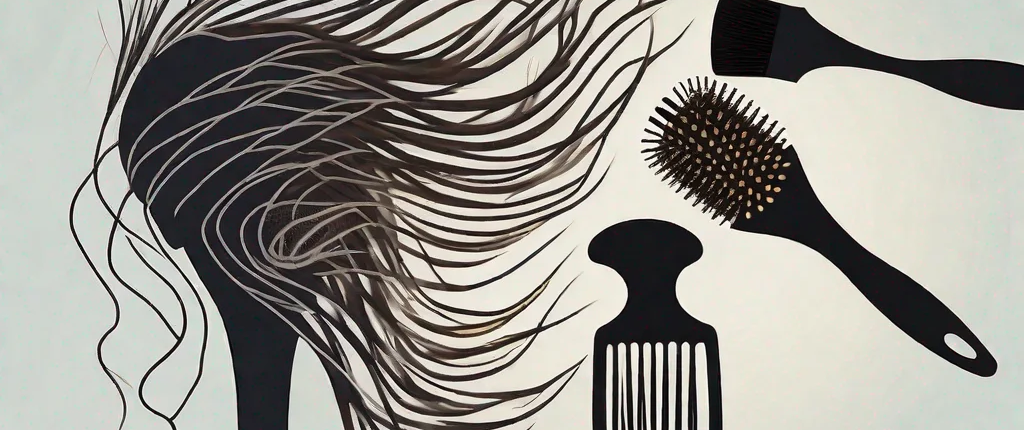Traction Alopecia: When is It Too Late?
Introduction
Traction alopecia is a fancy term for hair loss that happens when you tug on your hair too much. It can happen to anyone, no matter your age, if you’re a boy or a girl, or where your family comes from. We’ll break down what causes it, the signs, and how you can stop it from getting worse.
Understanding Traction Alopecia
Traction alopecia means losing your hair because you’re always pulling on it. This tugging weakens your hair roots, making your hair break and become thin. If you don’t stop it, you might lose your hair forever. Anyone can get traction alopecia, not just folks who do fancy hairstyles. It’s all about your hair and scalp.
What is Traction Alopecia?
Traction alopecia is a type of hair loss that occurs when the hair follicles are regularly pulled or strained. This happens when you use tight hairstyles like ponytails, braids, or weaves. The pulling hurts your hair roots, and it can make you lose hair. This often happens around your hairline, temples, or in places where you tug a lot, like the back of your neck or the sides of your head.
Why Does Traction Alopecia Happen?
This hair problem comes from hairstyles that are too tight and put too much pressure on your hair roots. Styles like tight ponytails, braids, buns, weaves, and hair extensions can hurt your hair. Using hair accessories like tight headbands, clips, and hot styling tools can also cause trouble. It’s not only girls who get this; boys can, too, if they wear their hair in tight hairstyles or use accessories that pull on their hair. It can lead to permanent hair loss if not treated in the early stages.
How long and how often you put tension on your hair also matters. The more you do it, the higher the risk of getting traction alopecia. That’s why it’s important to choose gentle hairstyles and hair accessories. It will protect your hair follicles and promote hair growth.
Apart from hairstyles and accessories, other things like brushing, combing, or washing your hair too much can make your hair roots weak resulting in broken hairs. Chemical treatments, like relaxers or perms, can be bad if they’re not done right or if you don’t give your hair time to recover between them.
How to Stop Traction Alopecia
If you want to prevent it, start by being kind to your hair and scalp. Avoid hairstyles that pull on your hair too much, and use accessories like wide-tooth combs and loose headbands. This will help you avoid traction alopecia.
If you already have it, you should go to the doctor as soon as you can. A dermatologist or trichologist can check how bad it is and offer treatments to treat traction alopecia. They might give you special creams or recommend lifestyle changes to make your hair grow back. Sometimes, you might even need a hair transplant.
1. Hairstyles That Can Give You Traction Alopecia
There are certain hairstyles that can lead to traction alopecia. These include tight ponytails, braids, buns, cornrows, weaves, and hair extensions. These hairstyles might look good, but they can pull on your hair too much, making it weak and causing hair loss over time.
2. How Hair Accessories Play a Role in Traction Alopecia
Hair accessories also play a part in traction alopecia. Things like tight headbands and clips that pull your hair can stress your hair roots. You should choose gentle accessories that don’t pull your hair too much.
Signs and Early Detection Of Traction Alopecia
If you notice your hair breaking, becoming thinner, or your hairline receding, these could be early signs of traction alopecia. You need to pay attention to these signs and take action. If your hair looks different or hurts in certain places, you should see a doctor.
Doctors can figure out if you have traction alopecia by looking at your scalp and asking you about your hairstyling habits. They might use a special tool to see your scalp up close. Sometimes, they might need to take a tiny piece of your scalp to be sure it’s traction alopecia.
Hair Care Tips to Avoid Traction Alopecia
You can stop traction alopecia from happening by taking good care of your hair and scalp. This means avoiding hairstyles that pull too much on your hair. You can choose looser hairstyles and avoid accessories that pull tightly on your hair. And don’t forget to wash and condition your hair regularly to keep your scalp and hair follicles healthy.
If you’re worried about traction alopecia or you already have it, think about trying other hairstyles that are kinder to your hair. Loose braids, natural hairstyles, or styles that don’t put too much pressure on your hair are better options. Ask a hairstylist who knows about protective styles to help you find a good one.
Treatments for Traction Alopecia
It’s best to prevent traction alopecia. However, if you already have it, there are treatment options available to treat traction alopecia.
You can try over-the-counter solutions like special foams or serums. They might help your hair grow back and stop more hair follicles from falling out. But before you use any of these, talk to a doctor to make sure they’re right for you.
In more serious cases, you might need to see a doctor. They could give you shots to reduce swelling and help your hair grow, or use lasers to wake up your hair follicles. In very bad cases, you might need hair transplant surgery. A dermatologist or hair specialist can help you figure out what’s best for your situation.
A Tailored Solution: The latest approach for tackling hair loss is DNA testing. With this genetic information, healthcare professionals can pinpoint customized treatment choices for you.
Conclusion
In short, traction alopecia is a type of hair loss that can occur due to excessive pulling or tension on the hair and hair follicles. Knowing what causes it, the signs to watch for, and how to prevent or treat it is super important. If you think you have it or are worried about it, make sure to see a doctor. If you’re kind to your hair and choose your hairstyles wisely, you can prevent traction alopecia and maintain healthy hair for a long time.
Learn more about the HairLife DNA test.





